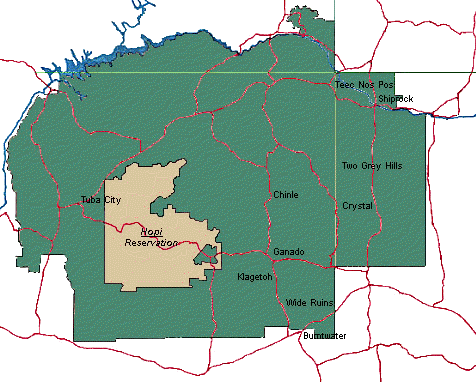
Mother Jones has a piece out about how Native Americans were instrumental in helping elect U.S. Senator Heidi Heitkamp (D. ND) in 2012 and it gives a great history on the voter suppression tactics used in North Dakota to stop Native Americans from voting:
North Dakota has a history of disenfranchising Native American voters. In 1898, the state’s constitution granted the franchise only to those “[c]ivilized persons of Indian descent” who had ended all tribal affiliations. The North Dakota Supreme Court enforced this provision by requiring witnesses to attest that Native Americans attempting to vote “live just the same as white people.” As with Jim Crow voter suppression in the South, it took federal civil rights laws to remedy all the official limitations on Native American voting rights in North Dakota. While these legal barriers no longer exist, historical discrimination remains an obstacle to obtaining the identification now required to vote. According to a lawsuit seeking to overturn the ID law, the state’s Native American population has more than triple the unemployment rate and poverty rate of the rest of the state. Many Native American North Dakotans need to travel long distances to obtain a driver’s license or non-driver state ID but lack the transportation to do so.
North Dakota’s voting system is unlike that of any other state in one important respect: There is no voter registration. Voting precincts are small and hyper-local, and most poll workers know the people casting ballots in their precinct. Before 2013, voters presented identification only at a poll worker’s request. If a voter failed to present sufficient identification at the polls, a poll worker could vouch for the voter’s eligibility, or the voter could sign an affidavit swearing he or she was eligible. Native American voters have used this option at a far higher rate than white voters, according to court filings. But next month’s election will be the first in years without this option.
It’s hard to tell exactly how the Native American vote in North Dakota breaks down along party lines. Because the state does not have voter registration, the number of registered Democrats and Republicans in majority-Native American counties can’t be compared. And no exit polls appear to have been conducted in the state in 2012. But in Rolette and Sioux counties, the only two in the state that are more than three-quarters Native American, Heitkamp won more than 80 percent of the vote. (She received more than two-thirds of the vote in Benson County, the only other one with a Native American majority.)
North Dakota passed the 2013 voter ID law (mostly along party lines) without any hearings or debate on the bill’s final text. It required voters to provide a driver’s license, state ID card, tribal ID, or another ID allowed by the secretary of state. In order to be valid, an ID needed to have a residential street address. This was a particular problem for Native Americans, who often lack a residential address and use P.O. boxes instead, because the US Postal Service does not deliver to some rural homes on tribal reservations. Though tribal IDs were technically an acceptable form of ID, those that listed a P.O. Box in place of a street address were not sufficient to vote. Around 5,000 tribal residents lack an approved form of ID.
In 2015, the state amended the law to make it even stricter, expressly prohibiting the use of student IDs and military IDs for all military members stationed in North Dakota and limiting the use of absentee ballots without ID. Expired IDs were also not accepted, and the secretary of state could no longer add to the list of acceptable forms of ID.
In January 2016, a group of disenfranchised Native Americans who had been unable to cast ballots in 2014 filed a lawsuit to stop the strict ID requirements. According to the suit, there is not a single site where a state ID can be obtained on a reservation. The case presented expert testimony finding that nearly 24 percent of the state’s Native American population lacked a required form of ID, twice the rate of non-Native American voters. Above all, the Native American plaintiffs protested the nearly insurmountable problem of the residential address requirement. The federal district court judge temporarily blocked the law, ruling that voters without ID could cast a ballot the old way, with an affidavit attesting to their eligibility.
Undeterred, the North Dakota Legislature amended its law for a third time in 2017. This time, it replaced the affidavit option with what it claimed was another failsafe: showing documents proving residency, such as a utility bill or paycheck, in addition to an ID. Again, voters challenged the law; if a Native American voter lacked a residential address, his or her utility bill or paycheck would be addressed to a P.O. Box. In 2018, federal judge Daniel Hovland issued an order that again tempered the effects of the law: “The State has acknowledged that Native American communities often lack residential street addresses,” he wrote in April. “Nevertheless, under current State law an individual who does not have a ‘current residential street address’ will never be qualified to vote.”
Instead of an affidavit, Hovland created a new backup option: Tribes could issue an ID with a home or mailing address to voters that must be acceptable at the polls. The ID could be as simple as a letter.
The state appealed Hovland’s ruling, and in September, the 8th Circuit Court of Appeals reversed the ruling and allowed the ID requirement to go into effect. The US Supreme Court let the 8th Circuit’s decision stand, over an impassioned dissent from Justice Ruth Bader Ginsburg.
But Native American groups are fighting back:
Advocacy groups have been meeting with tribal leaders on all of North Dakota’s far-flung reservations, trying to figure out how to help voters get the addresses and identification they need through the process the state described. It’s a tall order.
One of the groups, Four Directions, came up with its own plan. In a letter to Secretary of State Al Jaeger, it suggested that tribal officials would be stationed at every voting location on the state’s reservations, ready to issue identification letters on tribal letterhead. They would use an established addressing system for rural areas to assign residential addresses on the spot.
Oliver and Barbara Semans, co-executive directors of Four Directions, wrote that they believed Mr. Jaeger had “no authority to prevent tribal governments from implementing this plan,” because “tribal governments have the inherent sovereignty to issue residential addresses to any tribal member who may lack such an address.” But they urged him to “publicly support” it.
Mr. Jaeger declined. “It is inappropriate for me to do so because it is a legal question that is beyond the authority of this office as to whether a sovereign tribe has those powers within their jurisdiction,” he wrote in a response that his office provided to The New York Times on Thursday.
And this great community has been helping Native Americans fight for their right to vote:
So North Dakota Native Vote is attempting to fix the situation by providing updated tribal ID cards or address verifications to members of the affected tribes, according to the Daily Kos campaign post. By Thursday morning, the group had fielded a six-person team to coordinate their efforts that it hopes to expand in the coming days, given that it’s just a few weeks from the midterm elections.
“In my perspective, there was a real hunger to channel the sheer frustration of blatant voter suppression by putting dollars down,” says Prairie Rose Seminole, a volunteer coordinator for the group, in an email to Fast Company. “People get that there is urgency here. Urgency in time and needed resources to get this work done in less than 20 days.”
Overall, Seminole says that at least 75,000 potential voters could be affected. As the Nation reports, Native Americans account for just fewer than 6% of the state’s population, but traditionally vote heavily for Democratic candidates. Some of the state’s races may come down to extremely thin margins: In 2012, Senator Heidi Heitkamp (D-ND) won her seat by just a few thousand votes–and is in another tight race to retain it.
If they can move fast enough, Seminole hopes that people who might have been unaware of the situation might be even more encouraged to vote. Many of those affected are in rural areas, so North Dakota Native Vote has combined fixing paperwork with a get-out-the-vote campaign and will be coordinating drivers to help those who need transportation to reach the polls. “There will be more hurdles,” says Seminole. “These efforts at this time are just a quick response, but the real issue of voter suppression and silencing our voices is a threat. We need to do the work to ensure that we’re building long-term engagement and build something so that we are heard.”
I am very proud and encouraged by how this community has been helping fight back against the voter suppression tactics in North Dakota. Heitkamp herself has been hearing these concerns and staying close to Native American communities:
Native American voters got the chance to hear from candidate Heidi Heitkamp today ahead of the November election. This comes at an important time after the Supreme Court decided to stay a decision on the new North Dakota voter ID requirement. The decision especially affects many in the Native American population.
The meeting talked about the most important issues going on in the Native American community. Some of the top issues being discussed were access to affordable housing and job opportunities. Executive Director of the Native American Development Center, Lorriane Davis, says their biggest goal is to get voters informed on the issues.
“The Native American Development Center is not influencing Native American constituents on how to vote. It is just to provide both the platforms equally in the same manor same questions so that the constituents are able to make an informed decision,” says Davis.
And Heitkamp has been helping bring attention to this bull shit:
Secretary of State Al Jaeger, the defendant in the voter ID lawsuit, told ABC News voter suppression is not the intent of his office or the voter ID law.
“I can look you straight in the eye and I will tell you that nothing has ever happened in this office to target anybody. That’s not what I was elected to do,” Jaeger said. “I took an oath of office to follow the laws of the state of North Dakota and I try my best every day to do that.”
Jaeger said his office is entirely focused on making voting accessible to anyone who wants to do so.
“I don’t have time to try to figure out how to disenfranchise anybody in the state of North Dakota because all of our efforts to make sure that anyone who wants to vote will be able to vote.”
Heitkamp countered Jaeger’s view in an interview with ABC News after Thursday night’s Senate debate. She said the law by its nature blatantly disenfranchises Native Americans by requiring a residential street address.
“Why would we ever disenfranchise a Native American veteran who only has a P.O. box that everybody knows when they walk into the polling booth, they know exactly who that person is, they know that they’re a North Dakota resident. That’s why we don’t have registration in North Dakota because we don’t have this problem and anyone who says this isn’t about disenfranchising Native Americans is not being honest,” the senator said.
Click here to contribute to the campaign to make sure Native Americans can vote.
Click here to donate and get involved with Heitkamp’s re-election campaign.



Leave a Reply